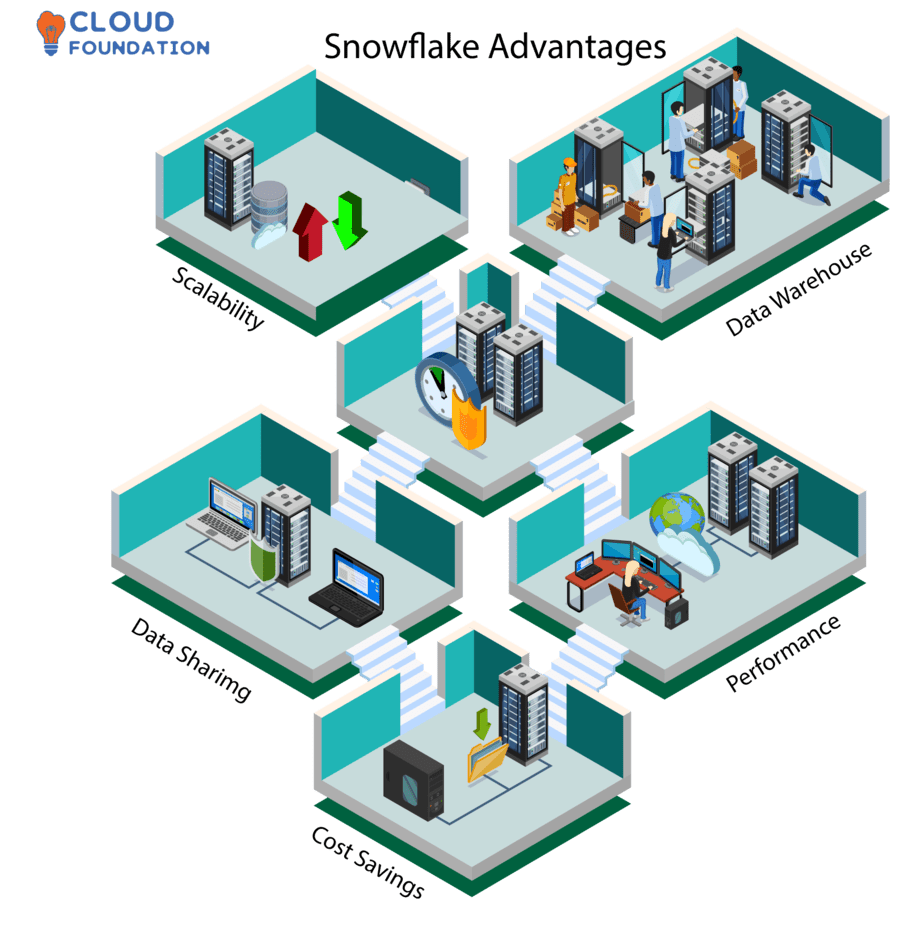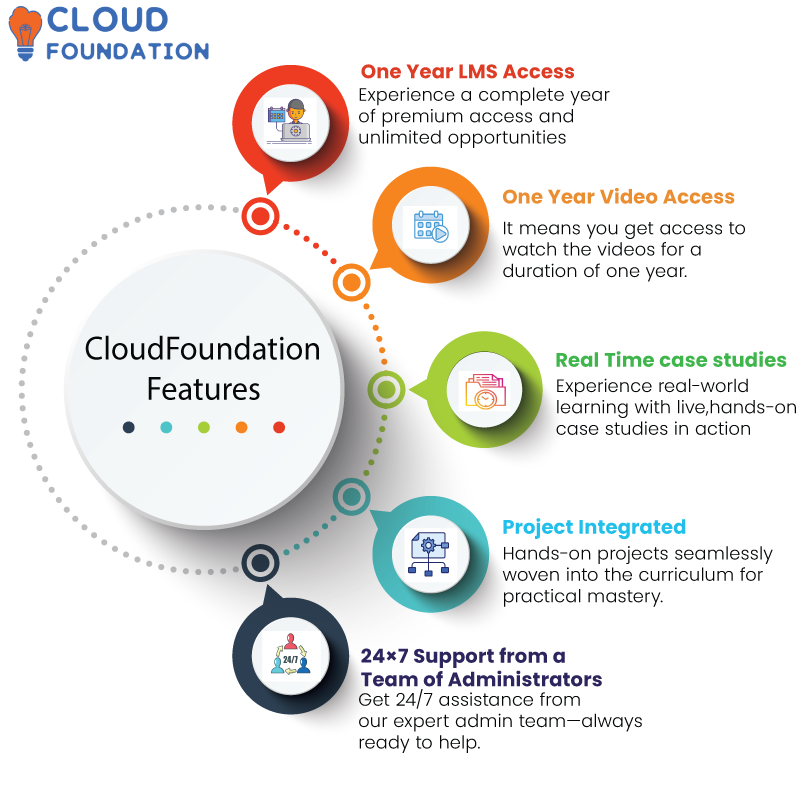What is Snowflake and What is Snowflake used for? [2025]
Whether you’re a student looking to supplement your education, a professional looking to develop new skills, or a newbie looking to learn new technology, here is the right course for you.
Learn this simple Snowflake Step by step. It can assist you in maximizing your data’s potential.
Overview, Introduction to snowflake

Snowflake is a cloud-based data warehouse that is built on top of Azure and AWS Cloud platforms. It’s a fully managed SaaS offering that is easy to use and does not require hardware or software installation.
It is very scalable and can support many users and transactions. It’s designed for high availability. It can help the continuous work of an organization without the risk of downtime or interruption.
Snowflake definition OR Define Snowflake

Snowflake is a cloud data warehouse, which means it’s entirely software and data storage based. There’s no hardware or software to install, configure, or manage.
Snowflake data warehousing is built on top of a cloud-based architecture, making it suitable for massive data warehouses. Its unique architecture enables it to provide high performance and efficiency while allowing ease of use.
It is a fully managed service. Snowflake handles the entire process of using and managing a platform, including optimizing the data warehouse and keeping it up to date.
What is Snowflake do, and what is Snowflake used for?
Snowflake can be used with any structured, semi-structured, or unstructured data.
This allows the warehouse to store and process data faster and provides higher capacity. The Snowflake Interface, on the other hand, saves the information to a cloud storage service that provides it.

Snowflake manages all aspects of security and information management. This storage service is designed to support data management and analytics. The data is encrypted and secured in the cloud.
The Snowflake Interface, known as the “Query Processing Unit,” runs all queries.
It receives query instructions in the form of SQL statements and executes them. It provides various query tools that allow users to analyze their data.
It also includes many built-in functions that can be used with the SQL database. The Interface converts query instructions into SQL statements and executes them.
Following are the most common types of queries in Snowflake:
Table queries
Group by queries
Order by queries
Limit queries
Filtering queries.
How does Snowflake work?
Snowflake provides a simple, secure way to manage data and analyze it.
The three main components of Snowflake are the cloud data warehouse, the Snowflake Interface, and the Snowflake SQL programming language.
Data warehousing with Snowflake: The ever-growing demand for data analysis has led to the creation of numerous data tools and platforms.
However, not all tools can handle all types of analysis requirements. Many companies rely on a single data tool to meet all their data analysis needs, which can be highly challenging and expensive.
Data warehousing solutions with single-platform deployments can be unstable and difficult to manage, while multi-tool platforms require extensive training and management.
The Interface acts as the brain of the system. It processes all queries and retrieves the data required by the user.
The snowflake warehouse is built on a single platform, which means it can support a single data model and can be used to store structured data and semi-structured data such as JSON and XML.
The Snowflake SQL programming language creates queries that run on the snowflake cloud data warehouse.
The platform is fully managed and handles all security and management aspects.
Why snowflake, and what are the benefits of Snowflake?
Snowflake uses cloud warehouses that are physically separated from the data processors (i.e., servers). This separation ensures that the warehouses are independent and that no data is lost during an outage Snowflake also manages the storage and performance of the data stored in the database.
Snowflake Benefits:

Snowflake offers a variety of business benefits that standard SQL databases need to include. It has many benefits, but the most important ones are storage and performance management.
This separation of storage and management reduces the risk of data loss and improves the overall performance of a database.
One key benefit of Snowflake is that it allows users to access data using a web-based interface, regardless of where it is stored. With a standard SQL Snowflake database, employer entry is limited to the database servers.
Snowflake advantages and disadvantages
Snowflake Pros

Scalability: The primary selling point is scalability, or how well it handles growth and contraction. Users can easily adjust the service’s configuration to meet their current demands.
Data Sharing: Data-sharing capability is both secure and straightforward to use. It facilitates the transfer of information between individuals and institutions.
Data Warehouse: Data warehouse is a cloud-based service that provides a unified environment for information storage, retrieval, and analysis.
Cost Savings: Unlike conventional data warehouses, Snowflake can save money by cutting down on expensive hardware and software requirements.
Performance: Fifth, Snowflake outperforms conventional warehouses in terms of performance. Compared to other data warehouses using the same hardware, it has a far higher query execution speed.
Snowflake Cons

Expensive: It is a cloud-based data warehouse, which may be costly for enterprises to set up and manage.
Security Issues: Unlike data warehouses, Snowflake gives its users less command and oversight.
Complex Architecture: Thirdly, the architecture could be more straightforward, making it more challenging to manage and troubleshoot than a standard data warehouse.
Restricted Connectivity:
Snowflake’s inability to communicate with all kinds of systems makes it challenging to include them with preexisting ones.
Limited Automation:
Snowflake offers less automation than competing data warehouses, increasing the time required to complete manual activities.
What is snowflake software, and what is snowflake software used for?
The Snowflake Software Meaning can be defined as it is a data warehouse that operates in the cloud and does data analysis remotely. It’s designed for information warehousing, data analytics, data lakes, and data sharing, among other uses for storing and processing massive volumes of data.
It is a piece of software that can store, query, and analyze massive amounts of data at lightning speed and with a high degree of security, regardless of the scale.
Snowflake Software used for

Data Volume and Variety: The software allows for storing and analyzing massive amounts of data from various directions. Because of this, it’s perfect for companies that amass and analyze vast volumes of data from many sources.
Scalability: It is highly scalable, meaning that it can be quickly expanded or contracted to meet the needs of any business. That’s why it’s perfect for companies that need to expand their data storage and processing capacities rapidly and painlessly.
Flexibility: Its ability to store and analyze data from multiple sources makes it an excellent choice for organizations that must adapt rapidly to shifts in their data environments.
Security: Data encryption, user authentication, and permission management are critical security features in Snowflake software.
Cost-effectiveness: It is less expensive than competing data storage and analysis options, making it a good fit for enterprises on a tighter budget.
Data storage, management, analysis, and sharing are all simplified with Snowflake tools because it is a cloud-based data warehouse and analytics platform.
All the Snowflake basics can handle various data kinds and sources and are fully managed. Some standard features are scalability, data sharing, and near-real-time analytics.
Users of Snowflake can rapidly and easily acquire access to data from a wide variety of sources and readily alter and combine that data before analyzing it for insights.
Snowflake Modules or Snowflake Features
In this section, we will explore some of the unique features of Snowflake

High-Speed Performance
The snowflake data warehouse is built on top of the cloud infrastructure and provides out-of-the-box features for data storage, computing, and analytic processing.
A data warehouse is designed to provide high performance and can process up to 5 million queries per hour.
Strong data security
It is built on the cloud infrastructure and uses a hybrid key-based and server-side encryption technology to secure user data.
The snowflake data warehouse automatically manages all aspects of data security, including key management, revocation, retention, and compartmentalization.
User-friendly Interface
It provides a user-friendly web-based interface that allows users to manage their snowflake accounts and perform all snowflake-related tasks.
The Interface is compatible with all major web browsers (such as Chrome, Firefox, and Safari) and does not require installing any additional software or plugins.
It is entirely browser-based and does not require the user to interact with the server using any client software.
Zero administration and maintenance requirements
Snowflake is a cloud-based data warehouse that allows users to manage their accounts and perform all snowflake-related tasks using a web interface.
The data warehouse is entirely managed by Snowflake and does not require hardware or software installation. It is a SaaS (software as a service) offering requiring no installation, setup, or maintenance.
What are the best ways to learn Snowflake?
Take an online course: To get started with Snowflake, there are a multitude of online courses available. These courses will teach you the fundamentals of the platform as well as give you hands-on experience with the software.
Read blogs and Tutorials: There are numerous blogs and tutorials accessible online that provide a detailed look at Snowflake. These can be excellent resources for learning more about the platform.
Online courses at CloudFoundation are planned to fit your schedule and budget. There are two types of training available self-paced and instructor-led courses, and the flexible pricing options make it easy to find a class that fits your budget.

And the instructors are experts in their respective fields. The online training program also offers additional benefits.
Snowflake Training videos and Snowflake materials are available to you even after you’ve completed the course, so you can refer back to them as often as you need.
They are committed to providing the best online training experience possible.
They strive to keep the Snowflake courses up-to-date and relevant, and their customer service team is always available to answer any questions.

Divya
Author



